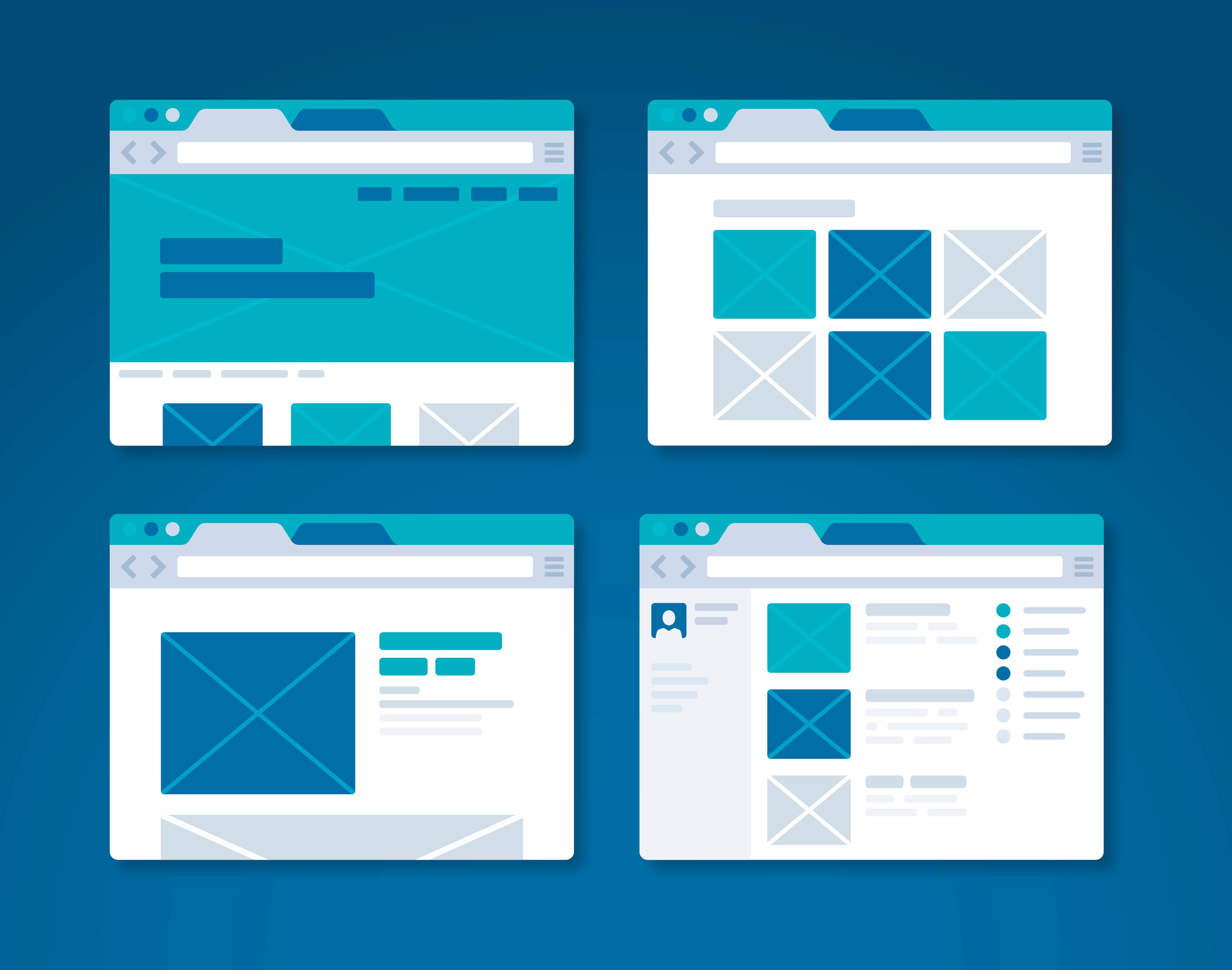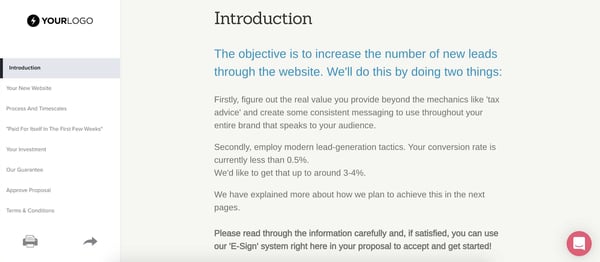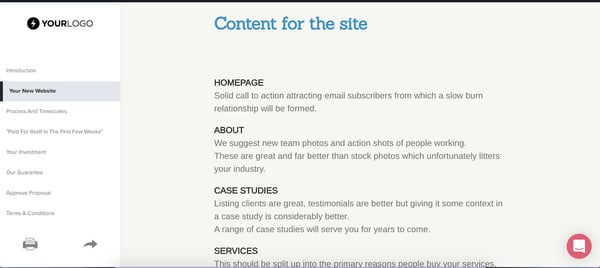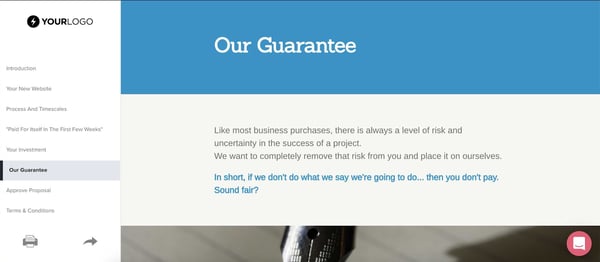May 19, 2020
 by Adam Hempenstall / May 19, 2020
by Adam Hempenstall / May 19, 2020

If you’re a freelancer or you work in a design agency, it’s likely you have to send business proposals to your prospects if you want to turn them into your clients.
As you probably know, writing, sending, and managing business proposals isn’t exactly fun. It can take hours to finish up a website proposal that impresses clients enough to make them sign and trust you with building their website.
The good news is automation has come to the world of business proposals too. One of the best ways to write proposals more quickly and efficiently and convince more clients to hire you as their website designer is to use a website proposal template.
Here is how you can create a proposal template that saves time and brings you more money than you would make by writing proposals from scratch.
Pitching clients is the core of any agency’s sales department and proposals are the key sales document for this process. As you pitch clients over and over again, you’ll notice that most of the proposals you send tend to have similar information and elements. Of course, each client is unique, but a big chunk of content can be reused across all of your website proposals. This is why you should use a website design proposal template.
In short, their biggest benefit is saving time. If you’ve found the winning proposal formula that converts prospects into paying clients, turn it into a template by using your best proposal elements and leaving out the information that relates to the individual client.
The ideal proposal template is similar to a proposal that is 90% finished. You have to add in the client’s specifics, a case study with another client similar to them and the unique elements that they want to be done for their website. The basic idea is to spend 20 minutes writing a proposal instead of four to five hours at a time. Moreover, templates combine the best-converting elements of the proposals you’ve already sent, so they maximize your chances of winning new business.
You can have as few as one or as many as 20 proposal templates, depending on how granular you want to go. The more, the better and the easier your job with editing them will be.

Every client is unique. However, there are certain elements that every website proposal needs to have, regardless of what kind of website you’re building and for which client. These are the elements that every freelancer or website design agency needs to include in their ideal website design proposal template.
The introduction is the most read part of any business proposal. Most clients immediately jump into two sections: the introduction and the pricing. With this in mind, it’s also important to say that most agencies and designers don’t write great introduction sections.
In the introduction, don’t put any focus on you as the one offering design services. Talk about the client and their situation and how you can help them achieve their goals.
The one thing we’ll discuss later on, which is crucial to get the introduction right, are the discovery sessions and meetings before the actual proposal writing takes place. Designers who don’t really listen to their clients and ask the right questions are those who write poor introductions and business proposals and as a result, they don’t close any new business.
This is why all business proposals should come only after a detailed interview where you dig deep to find out why the client needs a new website and what kind of problem they are hoping to solve with it. As you know, there are clients who just want a fresh lick of paint on a website that’s already amazing, while others want a complete overhaul. Find out their real motivation for hiring you and put this knowledge in the introduction.
Write this section using the exact words that the clients use in your meetings – talk back at them. Don’t overuse complex jargon and talk like you would to an old friend – keep it easy to understand and read.
Besides the design, every freelancer or agency needs to pay special attention to the words that appear on top of that design. If you can convince the client that you can deliver high-converting copy along with your design services, you’re well on your way to turn them into a paying customer.

The content includes the copy on the website, such as headers, calls to action, and other elements that push their customers towards purchasing. However, if you have the capacity, you can offer actual content in terms of blog posts, eBooks, whitepapers, case studies, and anything else that your content creators can get done.
Arguably the most important page there is for any client in any industry out there. Perhaps their home page isn’t their main source of leads and income, but many business owners cling to it as the “face” of their company.
Do your research well and present your case for a homepage that will sweep them off their feet. Get inspired by a combination of their old website, their competition’s website, their idea of what their business should appear like, and the latest web design trends. However, the client may want something unusual, so it’s best to listen closely to what they say in your discovery session. Whatever path you take, pay special attention to this section because the client will too.
You probably know that this is one of the most important pages on any website and that every business owner wants it to be written meticulously and to reflect their company culture, business ethics and goals and represent their company in the best way possible. Show the client how you intend to write this page by using the information you have about them from your discovery sessions and meetings, as well as materials you can find about them online.
Everything that the website visitors can read goes here. Most agencies offer the basic copy for the homepage and a few other pages. You can go one step further and offer the whole package, soup to nuts.
That means on-page copy and accompanying content: blog posts, whitepapers, case studies, eBooks, lead magnets, ultimate guides, and much more. Sure, this is more work, but if you already know the client and their business, offering them a good content package will be easy.
Besides, if you already have someone in your company who’s skilled at writing content, this is a great opportunity to upsell your services. Just make sure that this is something that the client actually has a need for.
All clients care deeply about the products and services that they are selling. The way those products and services will be displayed and priced on their website is one of the crucial elements of every website design project. Pay close attention to how the client wants their offer to be perceived and factor this in when you design the services and product pages.
Writing and designing great CTAs is much more complicated than most people think. In fact, the right CTAs can make or break a website’s conversion rate. In your proposal template, make sure to have a section discussing your design and writing processes when it comes to creating calls to action.
The right CTAs will complement the overall look and feel of your website and further show the client that you understand their business and offer.
The more questions you answer on your own, the fewer questions the customers ask. If you can offer the services of creating and writing a FAQ page along with the website design, you can give your clients a compelling reason to work with you. Writing an FAQ page is a tedious task but it provides massive value to the client.
This is another seemingly simple page that can make a vast difference if done right. Guided by the knowledge from your client meetings and discovery sessions, you can present a case for a contact page that truly reflects the client’s mission and vision.
Before you start working on your client’s website, it’s time to have a meeting to discuss the process. Fill them in on what you will precisely do and how long it will take to give them the finished product. It’s surprising how many people omit timelines completely in their business proposals.
We like to call this a discovery session and this is the most important thing to do before even starting with your business proposal. The questions that you ask here will determine what your proposal will look like, what your offer will be and how likely you are to even bring them on as a client.
Start with what they want from their website and ask a series of questions to find out what they really want. You’ll often find out that someone who wants a full website redesign just needs someone to look over their major landing pages and increase their conversion rate.
Some major questions to ask during this interview include:
The more (relevant) questions you ask, the better. Not only will you be able to find out precisely what the business owner wants, but you will also be able to “feel their pulse” and determine how much you can charge them, based on the ROI that your services will bring them over time.
When you have all of the information ready and in one place, you can present a design proposal to the client. If you’ve carefully listened to what the client needs and how they want their website to look and feel, you should have an overwhelmingly positive reaction from the client at this point. If not, there is still room to fix things and you can promise them to tweak some elements when you deliver the first mock-up.
You can also offer a guarantee if you are certain about what you can deliver for the client:

If you have a decent idea of what the client wants in terms of content, your writers and marketers can work alongside your designers. That way, you can deliver a finished mockup of the design and content at the same time. Remember to write down the feedback for both separately so you know the direction that all teams need to take when building the actual website.
You’re 90% done at this point and if the client was happy with the mockup, you have a great basis to deliver the first version of the website. It’s a good idea to let your clients know how much of your time they have for making edits. Moreover, there are clients with endless requests for changing “just one more little thing," so it’s a great idea to set some hard limits in the terms and conditions section of your proposal template.
Once the client signs off on the final version of your website, you’re ready to launch. Your website proposal template should list the full process of what happens once the site is ready to launch. From getting all invoices paid to handing over access, cover all of your clients’ questions about the website launch before they can even ask them.
Website business proposals are one of the key sales documents that freelancers and agencies need to use to win trust with their clients. However, they require lots of effort to get them right. In a situation where you don’t even know if you’re going to get the client’s business, investing hours in writing a proposal can seem like a poor idea.
This is why a website proposal template is just the kind of shortcut you need to write proposals more quickly and efficiently. If you use the tips provided, you can write your proposals in 20 minutes instead of hours so you can have more time to design beautiful websites for your clients. Most importantly, you’ll never have to risk writing proposals for hours without knowing if they will work or not.
Now that you know how to create a winning proposal, amp up your knowledge on website building techniques to help you create better sites for your clients.
Adam Hempenstall is the CEO and Founder of Better Proposals, simple proposal software for creating beautiful, high-impact proposals in minutes. Having helped his customers win $120,000,000+ in one year, he’s launched the first Proposal Writing University where he shares business proposal best practices.
Give a little TLC to your brand audience.
 by Ben Johnson
by Ben Johnson
You've heard about death by committee: when a piece of content is the victim of too many ideas...
 by Corinna Keefe
by Corinna Keefe
Rome wasn’t built in a day, and chances are, neither was your favorite website.
 by Mara Calvello
by Mara Calvello
Give a little TLC to your brand audience.
 by Ben Johnson
by Ben Johnson
You've heard about death by committee: when a piece of content is the victim of too many ideas...
 by Corinna Keefe
by Corinna Keefe


.jpg?width=400&name=iStock-937749836%20(1).jpg)